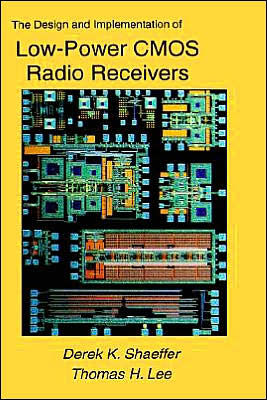5
1
9780792385189


The Design and Implementation of Low-Power CMOS Radio Receivers / Edition 1 available in Hardcover

The Design and Implementation of Low-Power CMOS Radio Receivers / Edition 1
- ISBN-10:
- 0792385187
- ISBN-13:
- 9780792385189
- Pub. Date:
- 05/31/1999
- Publisher:
- Springer US
- ISBN-10:
- 0792385187
- ISBN-13:
- 9780792385189
- Pub. Date:
- 05/31/1999
- Publisher:
- Springer US
109.99
In Stock

Product Details
| ISBN-13: | 9780792385189 |
|---|---|
| Publisher: | Springer US |
| Publication date: | 05/31/1999 |
| Edition description: | 2002 |
| Pages: | 194 |
| Product dimensions: | 6.14(w) x 9.21(h) x 0.02(d) |
From the B&N Reads Blog
